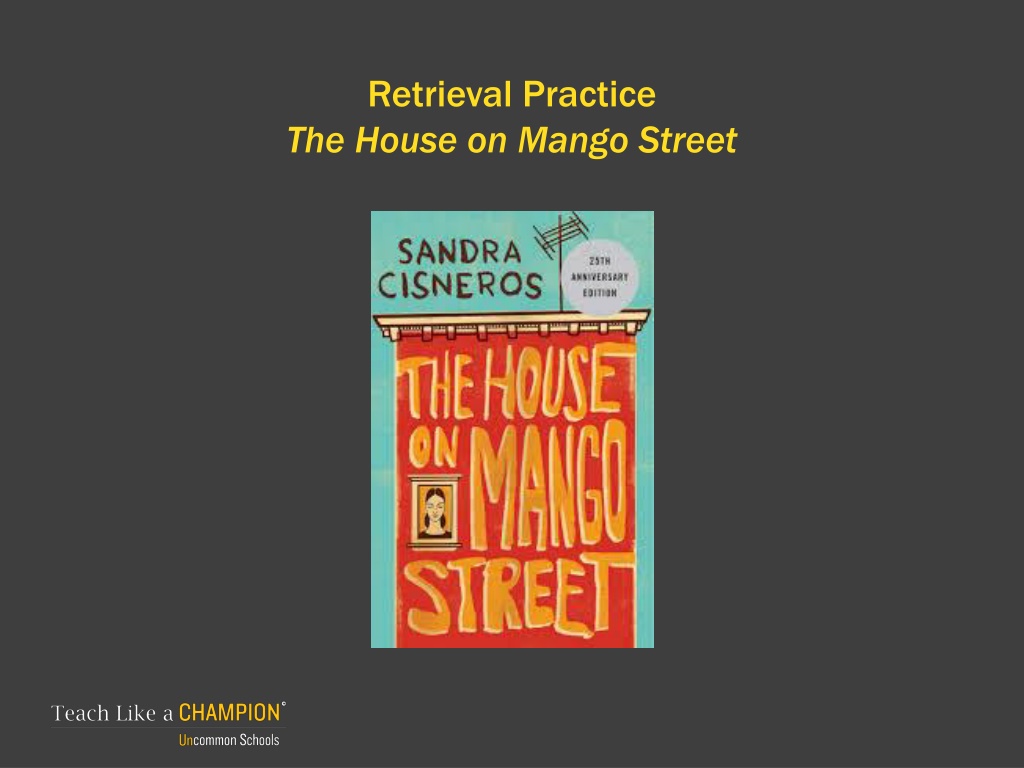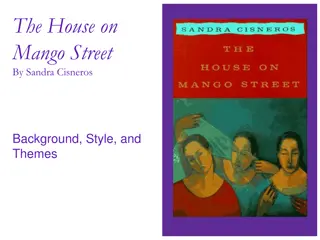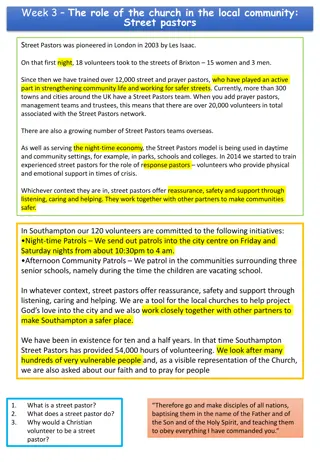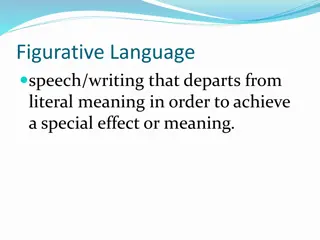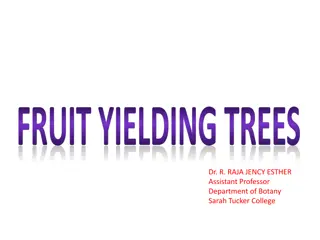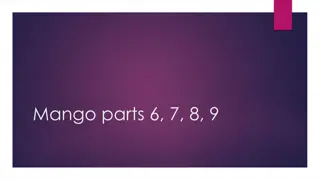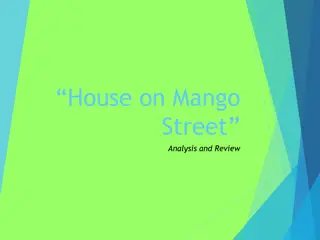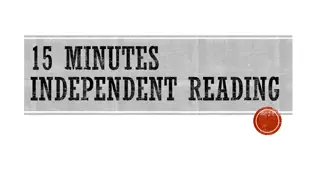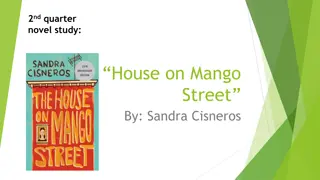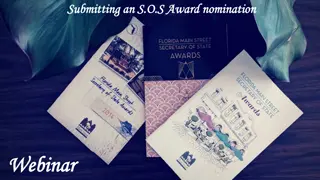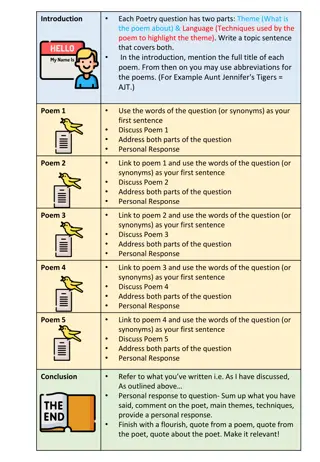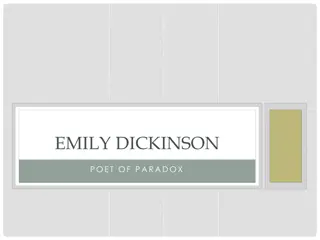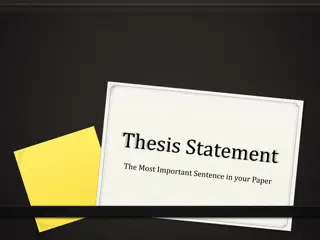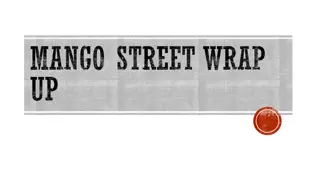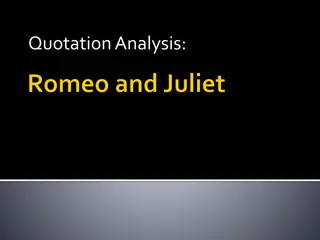Exploring Themes and Literary Devices in 'The House on Mango Street'
Delve into the world of Sandra Cisneros' novel, 'The House on Mango Street', through retrieval practice lessons. Learn about terms like ambiguity, personification, vignettes, and more. Understand the significance of motifs, slant rhyme, and alliteration as you uncover the layers of this captivating work.
Download Presentation

Please find below an Image/Link to download the presentation.
The content on the website is provided AS IS for your information and personal use only. It may not be sold, licensed, or shared on other websites without obtaining consent from the author. Download presentation by click this link. If you encounter any issues during the download, it is possible that the publisher has removed the file from their server.
E N D
Presentation Transcript
Retrieval Practice The House on Mango Street
Retrieval Practice: Lesson 4 1. What term meaning? term describes a statement or event that can have more than one 2. What is personification personification? Give one example of personification Mango Street. personification in The House on 3. What does it mean that The House on Mango Streetis written as a series of vignettes vignettes ? 4. What is a sentence fragment her work? fragment? What s one reason Cisneros uses fragments fragments in 5. Who is the narrator about this narrator so far. narrator of The House on Mango Street? List 2-3 details we know Take 3 minutes to complete these questions 6. Explain one characteristic of a patriarchal patriarchal society.
Retrieval Practice Answers: Lesson 4 The term ambiguity refers to a statement or event that can have more than one meaning. 1. 2. Personification is the attribution of attribution of a human characteristics to something nonhuman. One example of personification is <insert answer here>. 3. The book is a series of vignettes because it is composed of multiple, related short scenes meant to capture a single impression or memorable moment (instead of being one longer narrative like a typical novel). 4. A sentence fragment is an incomplete sentence. Cisneros uses fragments to create ambiguity; to create prose that reads like poetry. 5. The narrator is Esperanza. < <We know insert answer here>. 6. A patriarchal society is one in which men hold primary power and control the family, society, and/or government. Self-score: ________/6
Retrieval Practice: Lesson 8 1. What term describes an idea, symbol, or image that occurs multiple times in a text? 2. How is a motif different from a theme? 3. What is slant rhyme? 4. In the vignette Hips, Esperanza says, They bloom like roses. What literary device is this an example of? 5. What does it mean for a line to be ambiguous? 6. What is alliteration? Give an example. Take 3 minutes to complete these questions
Retrieval Practice Answers: Lesson 8 1. The term motif refers to an idea, symbol, or image that occurs multiple times in a text. 2. Authors use motifs (repeating ideas, symbols, or images) to develop the theme, a message conveyed by a text that applies to multiple other texts. 3. Slant rhyme refers to repeated sounds at the ends of words that are similar but do not quite rhyme. 4. They bloom like roses is an example of a simile. 5. Ambiguity means leaving an event or idea open to multiple interpretations or more than one meaning; something ambiguous is often purposefully unclear. 6. Alliteration means multiple words close together that begin with the same consonant sound. One example of alliteration is <insert answer here>. Self-score: ________/6
Retrieval Practice: Lesson 12 1. What tense is used most frequently in Esperanza s narration? What might a change in tense indicate? 2. What is personification? 3. In the vignette Papa Who Wakes Up Tired in the Dark, Esperanza explains Papa crumples like a coat and cries. Name two literary devices you see in this quote. 4. What literary term means to place two (or more) images or ideas close together to emphasize the contrast between them? 5. How is a slant rhyme different from a perfect rhyme? Take 3 minutes to complete these questions 6. What does it mean for a narrator to be omniscient?
Retrieval Practice Answers: Lesson 12 1. Esperanza s narration is usually in the present tense. A change in tense might indicate a flashback or retrospective narration. 2. Personification refers to the attribution of a human characteristics to something nonhuman. 3. This quote includes a simile ( crumples like a coat ) and alliteration (crumples/coat/cries). 4. Juxtaposition means to place two (or more) images or ideas close together to emphasize the contrast between them. 5. Perfect rhyme refers to the repetition of the same sound in the final syllable of two or more words; in a slant rhyme, the repeated sounds are similar but not quite the same. 6. An omniscient narrator can move from the mind of one character to another. Self-score: ______ /6
Retrieval Practice: Lesson 17 1. What is an allusion? 2. In the vignette Linoleum Roses, Esperanza describes how Sally likes looking at the walls, [ ] the linoleum roses on the floor, the ceiling smooth as a wedding cake. Name two literary devices you see in this quote. 3. What literary term refers to an idea, symbol, or image that occurs multiple times in a text? 4. How is a metaphor different from a simile? 5. What is a coming of age story? 6. What is an enclave? Take 3 minutes to complete these questions
Retrieval Practice Answers: Lesson 17 1. An allusion is a reference to a significant historical, literary, cultural, or political figure or idea. 2. This quote includes alliteration (likes/looking/linoleum) and a simile ( ceiling smooth as a wedding cake ). 3. A motif is an idea, image, or symbol that occurs multiple times in a text. 4. A metaphor is a symbolic comparison between two things without using the words like or as ; a simile is a comparison made directly with the words like or as. 5. A coming of age story is the story of a protagonist who navigates a journey of self-discovery during the transition from childhood to maturity. 6. An enclave is a a place or group that is different from those surrounding it. Self-score: ______ /6
